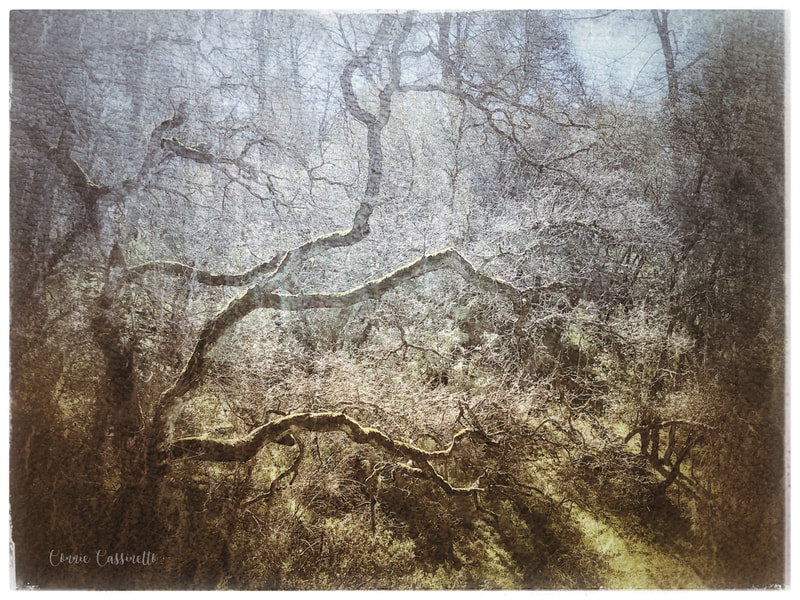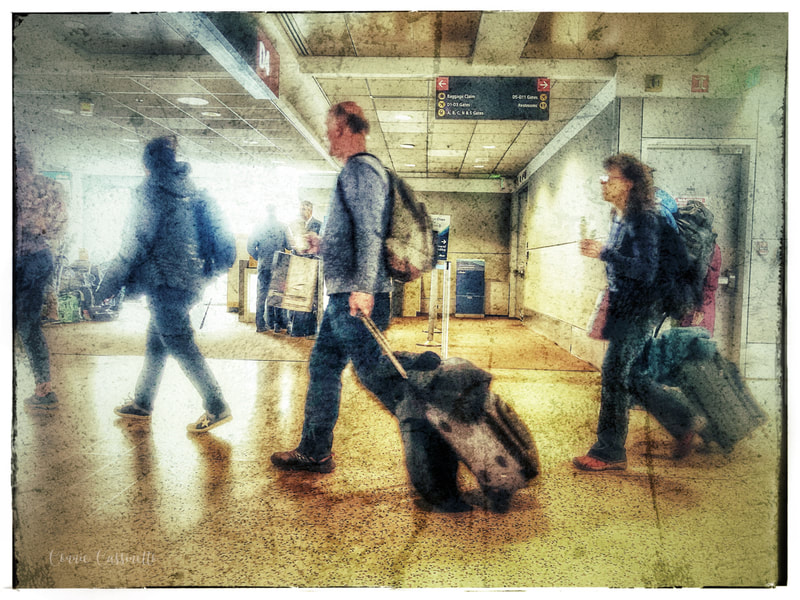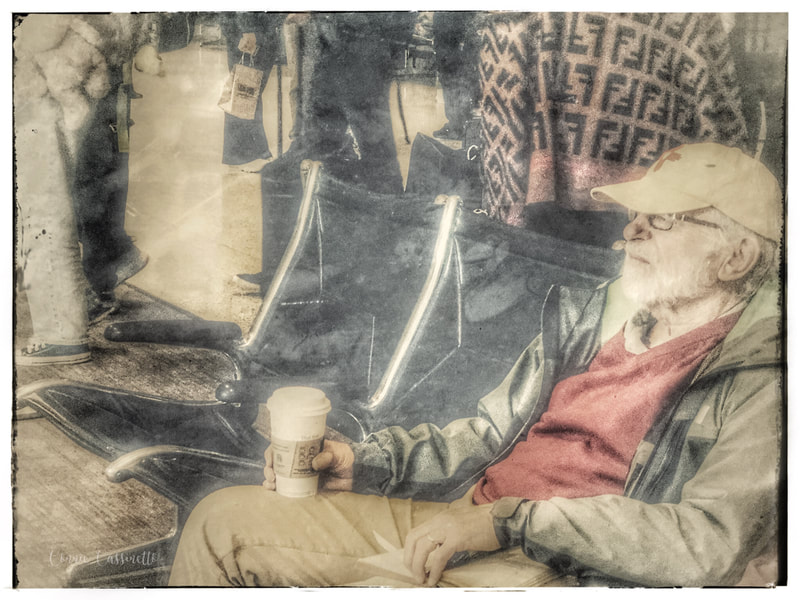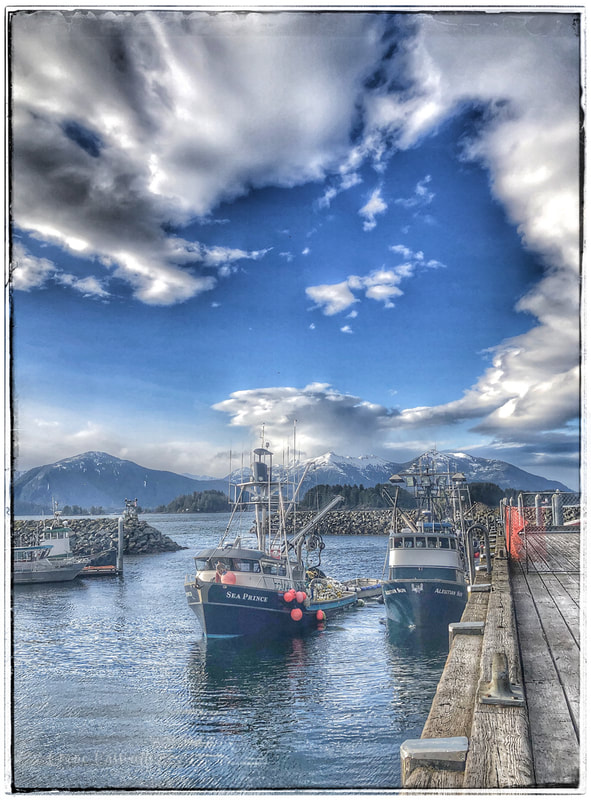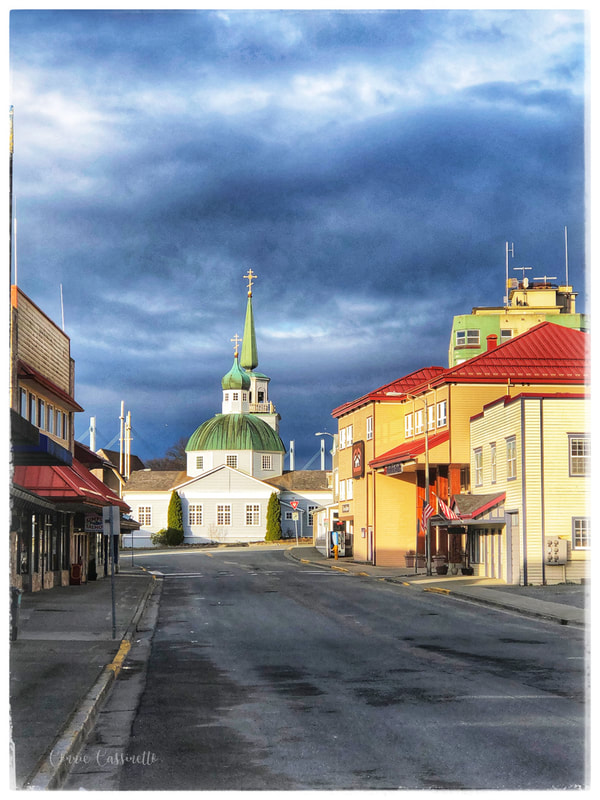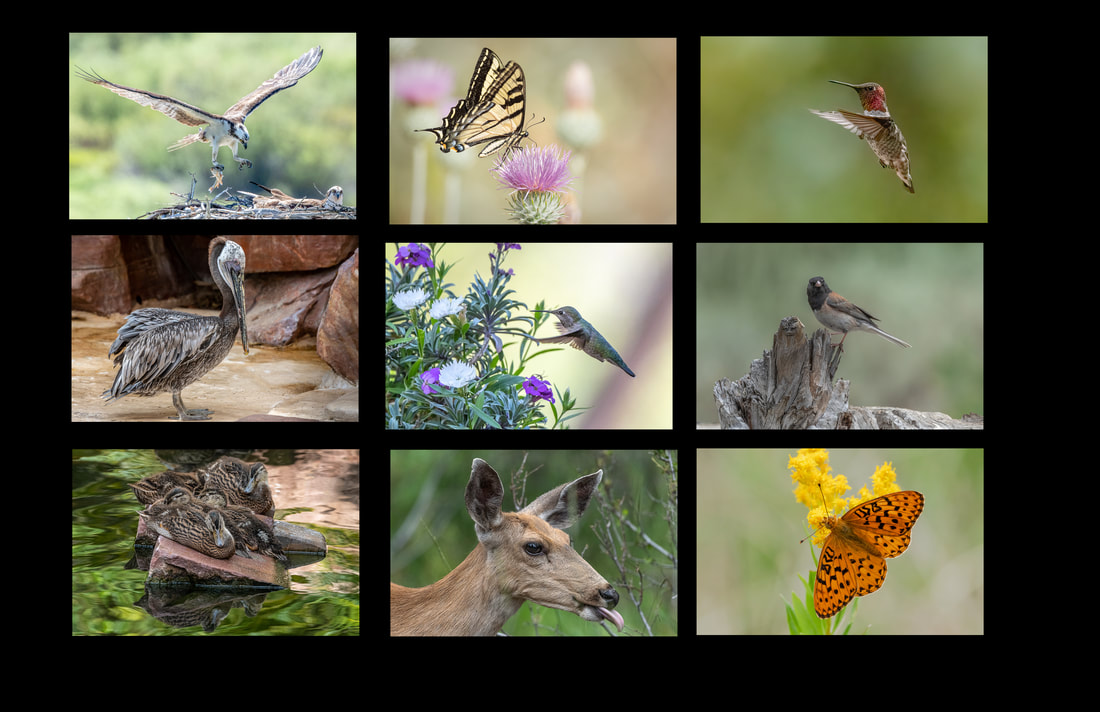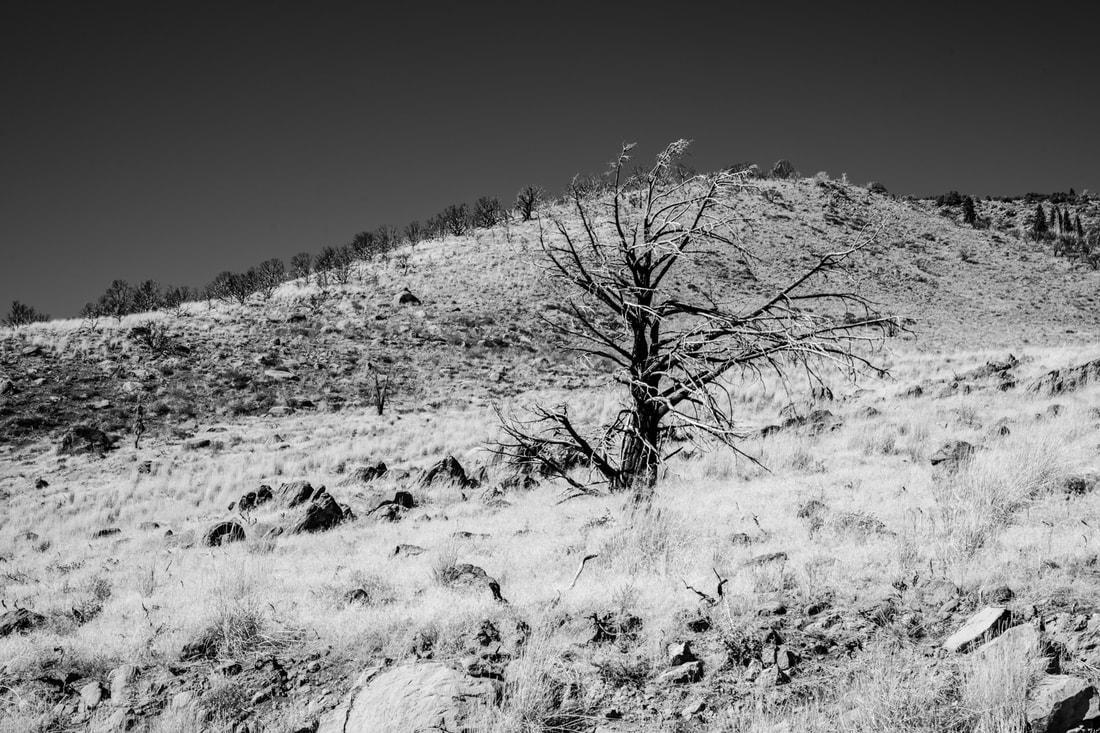 I recently visited San Juan Island, one of a group of islands in the San Juan Islands. Red foxes have been a part of San Juan Island for many years and were imported to kill the overabundant bunny population, and bunnies were imported prior to the foxes to feed people. So neither the bunnies nor the foxes are indigenous to the island nor is either population in danger of extinction. Foxes acclimate easily, not just in the San Juan Islands, but anywhere in the world that you find a fox, and the San Juan Island foxes flourished on the island. The island is populated by very wealthy people who have beautiful homes with wonderful sea views. These people appear to feel threatened by photographers who they believe are harassing the fox in order to get shots. There has been an on-going war of sorts for many years. The islanders were able to get a plains area in a state park that housed several fox dens closed to everyone due to their complaints about photographers. This simply pushed photographers to any den in the BLM portion of land not far from the state park. The BLM has different rules about wildlife than the state park does. When I was there photographing a fox den I was shouted at on more than one occasion by locals, who always seemed to have their dog on a leash walking with them. A woman saw us photographing and walked in front of us on the trail with her dog where minutes before had been fox kits playing but she shouted at us to leave the fox alone and told us we were harassing them but yet she seemed to think it was ok to walk her dog right where the fox kits had been minutes before. Another person shouted at us from a distance away to leave a fox along that we were photographing as it sat watching their husky, on a leash, that had stopped it in its tracks, so the fox was obviously bothered by the dog. The neighbors have been feeding these foxes for years and the foxes are very acclimated to people because of this. It has also created a situation where foxes get run over on the road because the neighbors live across the road from their den so the road must be crossed to get the food they offer. We saw one fox with what appeared to be a hen egg. We saw various foxes cross the road and go by each house looking for a handout. These neighbors don’t seem to understand that what they are doing is wrong. They complained to Fish and Game when we were there, the government entity that patrols for BLM. A ranger showed up to watch us photograph. I spoke with her and asked what the wildlife rules were on BLM land. She said that the only rule they had was to not impact in any way what the fox was doing. Several neighbors had yelled that we had to stay 75 feet away from a fox and this is not the case on BLM land, there is no minimum distance to stay away. We were probably around 50 feet as we photographed and no one in the groups we saw over the three-day period did anything that I would call unethical or questionable with the wildlife. The foxes are so acclimated to people that they walked directly past me on several occasions and actually approached someone who had a to-go container in their hand taking it back to their car tried to get the container, he had to shoo the fox away. The Fish and Game ranger said that neither Fish and Game nor BLM had a problem with the photographers, but they did have problems with the neighbors. The ranger that day simply sat on a rock and looked at her phone and told us she was there to appease the neighbors and that they sometimes got 15 emails a day. It was interesting to be at a fox den area and to observe the family. There was a black male, limping on three legs due to some type of injury but he looked quite healthy and well-fed. Then the red female with kits, someone said five but I only saw four at one time. Then a black vixen and a red vixen that were subordinate females to help care for the kits and hunt. According to a book I read by an animal scientist subordinate females are a female who did not become pregnant during mating season, these subordinate females are somewhat like hired help would be to us and they are tasked with duties by the male and female. Subordinate females, in studies, do not live as long as a normal mated female, most likely because of their inferior position in the fox family. But if the female that was mated was taken out of the picture then a subordinate female would move into that place in the family. Sounds to me like a good back-up plan. We got to observe as the female that was hunting came up the trail and toward the den with a dead vole to give to the pups, who were probably at the end of five weeks old, to get them started on hunting. We also watched as one of the females brough in fish from the nearby sea cliff area, but I don’t think that was for the pups, maybe for the male who was injured. I did see one female bring in some food and the other female, the black one, run out and take it from the red female and eat it so they apparently do hunt for each other. The pups came out several times and it was fun to watch them play with each other and the parents. If it were not for the vicious neighbors it would have been a 100% positive experience in wildlife behavior.
0 Comments
I was a recreational boater for more than 20 years, boating the San Joaquin-Sacramento Delta through a total of five boats. The last boat I owned was a 36-foot trawler. My husband became ill in 2008 and never boated again but I kept the trawler until 2015, taking it out with my dog, Gracie (now deceased) and meeting up with friends in various places on the delta. This year I seem to be on boats again but doing it with photography in mind. I was on a 42-foot fishing boat in Alaska in March and on the David B. this September and in November I'll be on a 240' icebreaker ship traveling in the South Pole. The David B. is 65 feet long and is an old refurbished diesel workboat.
The David B. has a story to it and you can find some information on it here: https://northwestnavigation.com/why-choose-a-small-boat-for-alaska-cruise/. The owners, Christine and Jeffery, are simply wonderful to travel with and Christine is the absolute best cook ever, she made fresh bread or muffins daily, fresh soups, and snacks were always available. And, she put up with my diet of no meat other than fish and the fish was wonderful. All of the food was simply incredible and I wanted to take Christine home with me to cook! While I was on the San Juan Islands cruise they also cruise to Alaska, be sure to check out their website above. 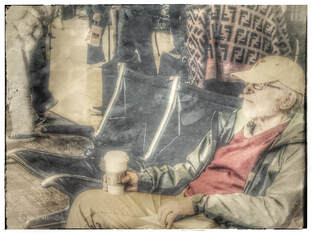 While I believe that cell phones work well for taking many types of photos, in the past I was never interested in using my cell phone to do that. Probably mostly because I’m usually shooting wildlife and it could be dangerous to be close enough to a bear to get that up-close shot! Cell phones have always worked well for family gatherings and many types of people photos and general events. My use of the cell phone as a camera has been using it to try and remember what kind of cat food my 19-year-old cat likes in any given week or day. I did take puppy shots of my Cairn terrier with it as he grew up, but I never used it to produce any type of what I’d term an “art” shot. Then a professional photographer I know made a presentation to a photo club I belong to and I got interested in the software he was using to process the images he took with his cell phone. As a photographer in todays’ digital world it is essential that I not only know how to use my very sophisticated camera equipment and all the skills I’ve learned that pertain to seeing and taking a shot, but I must also know how to use software effectively to reach the goal I’ve set for that particular image. And to use a cell phone effectively to create art images is no different, I still need to know the equipment, the art of taking a photo, and the software. It also helps to have an innate vision of how that image might look once processed and this is something some people have and others do not and I don’t know if it can be learned. A week or so after the presentation I attended I took a trip to Sitka, Alaska to photograph whales. I figured the airport would be an interesting place to try my hand at cell phone photography and at using a specific cell phone software called Snapseed. As I walked around the airport I looked for likely subjects and found many. I snapped away at various things and people and as I did a vision of what those images might become was always present in my mind. I had played with the software a bit before leaving and I was eager to try it out on my newfound subjects. Once in Sitka, I continued to use the cell phone to take a variety of images. And even when I got home I was still at it, snapping off shots around town. My cell phone is very old, an Apple iPhone 8 Plus that is a little over five-and-a-half years old so not modern technology. What matters most in cell phone photography is, does the subject lend itself to being processed by the program chosen to achieve a desired certain look, not having the latest updated technology. Even with a cell phone, composition, color, subject, light and background were all important. Having said that, I also knew that my chosen software could help with defects in some of those areas. Using a cell phone with no ability to change a lens or to control much of what happens is very different from using my high-end Nikon cameras, but just as fun and maybe even a lot more creative as I gave myself leeway to experiment as my only goal was to create something I thought was “artsy.” I was free of worrying about sharpness, or f-stop, or shutter speed as those things were beyond my control and probably would not matter that much in the end, depending upon what I chose to do with the image. I took landscape shots, people shots, pet shots, object shots, boat shots (the fishing fleet in Sitka, Alaska), and any scene that simply appealed to me for some reason. In the end, I loved how all of them turned out with a bit of flash and sass, they appealed to me on a personal level. I do similar techniques with a lot of my “real” camera shots, too, but using other software. I always find these altered shots more interesting to look at than a plain, unaltered shot. I guess, in the end, I’m not inclined toward documentary photography and that’s ok with me, as I like the creative side of photography best. I like making any photograph, from a cell phone or a high-end camera, all mine and using various photography software programs to do that. I’m still using my cell phone and playing with the shots to create art and pretty soon I’ll be upgrading to an Apple iPhone 13 as mine is now wearing out…it probably didn’t help to take all those fun shots and process them with Snapseed. In early April I took a trip to Sitka, Alaska to photography bubble-feeding whales during the herring run. This is also the time, of course, that the fishing boats gather to fish, using large nets, the herring to sale to buyers. I was told that the buyers were Japanese and they wanted the roe, not the herring. I have no idea what happens to the herring but I suppose it's sold as well to some buyer, maybe the Japanese do that after they take the roe (roe is fish egg). I was also told that the Japanese buyers were on board the boats to ensure that the roe was up to par, whatever that might mean.
The whole fishing process was fascinating to me and something I may not ever see again, although I'm already thinking about going back next April. I loved taking pictures of the fishing boats, which was not a surprise to me as I was a recreational boater for 25 years on the San Joaquin-Sacramento Delta in Northern California. In all, my late husband and I had five boats, at the end it was a 36-ft. trawler, a big lumbering heavy boat not build for speed but definitely build for comfort and endurance. Anyway, back to the herring run... All the fishing boats gather around and wait until they are told by a fishing game warden, I don't know the exact title, that the herring run is open and then its like a slow-motion race to get over the best herring spot and drop their nets. The fish are checked in the nets to ensure they meet whatever requirements there are and only then can the fishing boat captain say "pull up the nets" or "load the fish," however they do it. It looked like they sucked the fish up from the nets through a vacuum system. It was pretty crazy with 20+ big fishing boats milling around each other, a large pod of whales (maybe 12 or so), the small boats that contained people checking the nets, and then several whale-watching boats like the 42-ft. boat we were in. These days I mostly photograph wildlife and always look for some action in the shot. That's not to say I don't photograph sitting birds or mammals because I do that, but I still try to look for something that might create interest, putting the emphasis on something about the creature and what it is doing perhaps or even the color of the animal. I still photograph a lot of other nature shots and a lot of spring wildflower shots and love doing that, too. But, action does seem to be my "first love" to photograph.
On May 1 I took a new camera, to figure out how to use it, that had recently been delivered to an event called a dachshund race to see if I could get some action shots of the little guys running the race and crossing the line. The races were really fun to watch as the dogs had not read the rules nor did they obey a lot of what their "dog parents" said! Chaos pretty much ensued throughout the several races that took place but it was all for fun and it looked like the crowd and the dogs had a good time. Yellowstone National Park - wildlifeIn March I visited Yellowstone NP with several other photographers. There was still snow on the ground but it was not miserably cold - no lower than 7 degrees one morning - so we got some nice shots of wild animals against the backdrop of snow. One red fox was so perfect it looked like we were shooting in a studio: perfect backdrop, perfect subject, perfect light! I was able to finally get a shot of a wolf fairly close up, after six times in YNP and no wolf shot. I also got a nice shot of a Ram, an otter family, and some good coyotes shots, one coyote mousing. It was a good trip for everyone. I'm on my way back in late May/early June.
Photos During Covid TimesI realize that I have not written anything in my photo blog for a long time. We are all well aware of how Covid has impacted our ability to travel and be with family and friends. As a photographer I feel stifled with its impact and figuring out how to take photos without setting myself up for a potential illness has been difficult. On top of that my house is in the foothills and right now I hesitate to leave it as just recently there was a fire only a mile away and I have two indoor cats. I really wish the world would go back to the way it was a few years ago but I know that wishing that is futile.
I have been taking shots outdoors of birds in my yard and I did visit Yellowstone in early summer and I’m planning a trip next June, too. I’ve done a few shots with flowers inside and outside, too. I’ve experimented a lot with software, which is always fun for me as I like photo processing software. But, like everyone else, I really wish I could get back to traveling around the world to take photos, I do miss that, but I’m not willing at this point to take the risk. Here are several collage pages of some of the photos I have been able to take this year. I hope you enjoy them. I am not an environmental photographer although I am concerned about our environment and the direction it seems to be going. I'm somewhat of a realist, though, and I don't believe that the world I live in today will exist forever. I base this on looking at the past and the many worlds before me that have existed and perished. In general, I don't even think to take any environmental images. However, on a recent trip along Hwy. 395 in Northern California, only a few hours away from where I live, I decided to take some images that show what the current landscape in California all too often now looks like. We have been ravaged by fires here in California year after year, many started by our utility companies. It astounds me that our utility companies continue to allow this to happen, in spite of the fact that we now can go days without power as the company shuts it off to avoid their equipment starting a fire. The situation with the utility companies is very dire and a recent southern California fire was started by Southern California Edison (they recently admitted this), in spite of the fact that the power to the transformers was off. The utility companies have failed to maintain, upgrade and improve their equipment over the years and now all of the people in California are paying the price. The first image is just east of Mono Lake and the site was closed. Many of our public lands have been off limits to users due to the high fire danger and the actual fires in the nearby areas. Living in California used to be a wonderful experience but that experience has now dimmed considerably. The other two images are from Monitor Pass which is further north of Mono Lake.
Taking photographs at night can be difficult and the difficulties increase with the number of other photographers present! I recently shot with a small group of photographers in the Tuolumne Meadows area of Yosemite National Park. We were all stumbling around in the dark with headlamps trying to figure out focus and composition (and keep our footing), without really being able to see anything! Not only was it night but we were on rock hillsides and uneven terrain with tripods and multiple cameras. I, and others, would forget that we could not turn on the headlamp when we needed it, even in red light mode, when other people were shooting. This meant if I lost focus for some reason I had to fumble around with the camera settings and try to find something with light on it to focus, and then reset the composition. I got more than one shot that had someone's headlamp red light in it and I was even almost yelled at once for forgetting and turning on my light. Night shooting is tough!
In spite of it all, I got a few decent shots and I learned a lot in the process. I have shot at night before but not in awhile and this was my first time attempting to shoot images to create a star trail. I found, when I got home and looked at my shots, that I apparently cannot keep the camera still for long as I kept moving the composition when I really shouldn't have. I used the Starry Landscape Stacker software program to combine scenes for Milky Way images as the combining of scenes decreased the noise in the images. I used Photoshop for the 25 4-minute each images to create the star trail shot posted here. Creating a star trail shot was labor intensive, both in setting up to shoot it and in putting it together in Photoshop. The trip was a good experience and I learned a lot and it was nice to finally get out on a trip in this era of Covid-fear. For me photography is more than simply taking a snapshot of a subject. I see far too many images where someone obviously sees something, let's say a pretty flower, and they walk up and snap away. I recently heard the term "happy snapper" and I think this term would apply to the photographer who takes this kind of image. I'm much more interested in the art of photography, no matter what genre I'm shooting in on any given day. I think the term "art" applies to any photography genre, from photojournalism to fine art. The intent of an image does differ, why we take that shot, but no matter why we take the shot we can apply artistic concepts to it to make it the very best shot we can. These artistic concepts can occur in camera or in post. Creating a more defined piece of artwork with a photograph is not new, this has been happening since the inception of photography. The only difference in 2020 is that we now have the ability to create endless varieties of artwork with our shots via the computer, not the dark room. I have worked in a photography darkroom as I took three semesters of Black and White film photography at a college. I loved film processing and it was always exciting to see the image develop right before my eyes as the developer did its work. Now, however, I have so much more leeway to make the image all my own, with my unique touch (for better or worse) and working on a computer is so much easier for me than working in a darkroom. Since my career included computers and graphic arts I was able to use those skills when I started in digital photography and I realized at some point that I had a degree of inherent skill as far as being able to learn and master software. I know this is difficult for some people even today, although we've now been digital for many years.
The image below was shot with a mirrorless camera, a Nikon Z7. A mirrorless camera makes it somewhat easier to shoot an image while hand-holding, versus a tripod, because the camera is able to capture sharp images even at lower shutter speeds. I shot this image as I did because I knew I could play around with it in Photoshop to create something more than the image that I originally shot. I love how this whole series of flower shots turned out. This image is very painterly but completely a photograph. |
AuthorI am a photographer, it is my passion, my avocation, and almost everything I do revolves around it. Archives
May 2024
|














